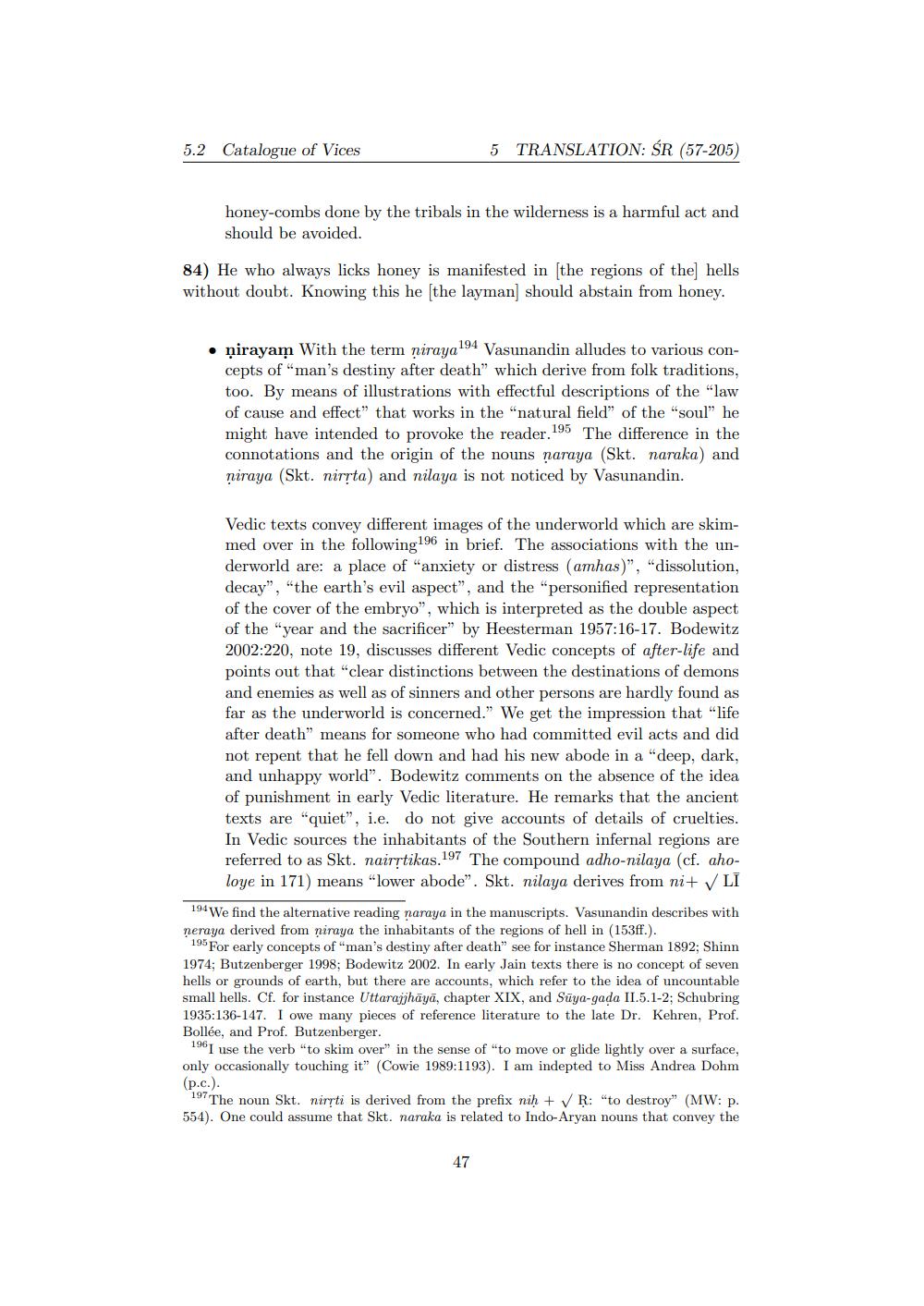________________
5.2
Catalogue of Vices
5 TRANSLATION: ŚR (57-205)
honey-combs done by the tribals in the wilderness is a harmful act and should be avoided.
84) He who always licks honey is manifested in the regions of the hells without doubt. Knowing this he (the layman should abstain from honey.
. nirayam With the term niraya194 Vasunandin alludes to various con
cepts of "man's destiny after death" which derive from folk traditions, too. By means of illustrations with effectful descriptions of the "law of cause and effect" that works in the "natural field" of the "soul" he might have intended to provoke the reader.195 The difference in the connotations and the origin of the nouns naraya (Skt. naraka) and riraya (Skt. nirrta) and nilaya is not noticed by Vasunandin.
Vedic texts convey different images of the underworld which are skimmed over in the following196 in brief. The associations with the underworld are: a place of "anxiety or distress (amhas)", "dissolution, decay", "the earth's evil aspect", and the personified representation of the cover of the embryo", which is interpreted as the double aspect of the "year and the sacrificer" by Heesterman 1957:16-17. Bodewitz 2002:220, note 19, discusses different Vedic concepts of after-life and points out that “clear distinctions between the destinations of demons and enemies as well as of sinners and other persons are hardly found as far as the underworld is concerned." We get the impression that "life after death" means for someone who had committed evil acts and did not repent that he fell down and had his new abode in a "deep, dark, and unhappy world". Bodewitz comments on the absence of the idea of punishment in early Vedic literature. He remarks that the ancient texts are "quiet", i.e. do not give accounts of details of cruelties. In Vedic sources the inhabitants of the Southern infernal regions are referred to as Skt. nairrtikas. 197 The compound adho-nilaya (cf. aholoye in 171) means "lower abode". Skt. nilaya derives from ni+ LI
194 We find the alternative reading naraya in the manuscripts. Vasunandin describes with neraya derived from niraya the inhabitants of the regions of hell in (153ff.).
195 For early concepts of "man's destiny after death" see for instance Sherman 1892; Shinn 1974; Butzenberger 1998; Bodewitz 2002. In early Jain texts there is no concept of seven hells or grounds of earth, but there are accounts, which refer to the idea of uncountable small hells. Cf. for instance Uttarajjhāyā, chapter XIX, and Sūya-gada 11.5.1-2; Schubring 1935:136-147. I owe many pieces of reference literature to the late Dr. Kehren, Prof. Bollée, and Prof. Butzenberger.
1961 use the verb "to skim over" in the sense of "to move or glide lightly over a surface, only occasionally touching it" (Cowie 1989:1193). I am indepted to Miss Andrea Dohm (p.c.).
197 The noun Skt. niryti is derived from the prefix nih + V R: "to destroy" (MW: p. 554). One could assume that Skt. naraka is related to Indo-Aryan nouns that convey the
47




